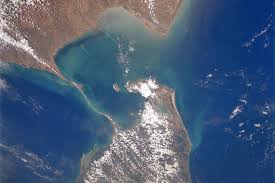The satellite images of the Indian Ocean shows a narrow strip that binds India and Sri Lanka. This is the so-called Adam of the Bridge, or the Set, a chain of limestone, which extends 48 km between the Indian Island of Ramshvar and Sri-Lanka Island Mannar. Adams of the bridge attracts not only geologists, but also archaeologists, ecologists and cultural researchers.
According to geological research, this area was formed about 7000-18 000 years ago. There are hypotheses that the islands have arisen due to the natural accumulation of sand and limestone deposits, while other scientists suggest that these are the remains of an ancient coastline that once connected India and Sri Lanka. For centuries, natural changes have made the transition impassable.
Adams of the bridge plays an important role in the cultural heritage of the region. According to the Ramayan Hindu epic, this bridge was erected by the Army of the Monkeys by order of the god of the Rama to save his wife Sita from the captivity of the Lanni Tsar Ravana. In the Muslim tradition of Adams, cities are also symbolic - it is referred to as a path that Adam has reached India after expeling from paradise.
For centuries, the Adams have repeatedly become the object of engineering ideas. In 1782, the British Oceanographer James Rennell first proposed the idea of creating a channel between India and Sri Lanka. In 1955, a draft navigable channel Setusamudram was developed, which would reduce the sea route by 400 km. However, environmentalists have warned the possible consequences for the local ecosystem, including the risks of destruction of coral reefs and potential pollution. In addition to environmental fears, the project has come to cultural resistance among Hinduists, for whom the frame is a sacred place. In 2013, the Supreme Court of India suspended the project, taking into account cultural importance and environmental risks.
Adams of the bridge remains an important object for scientific research and a source of cultural inspiration. It continues to attract historians, geologists and those who are interested in the nature of world legends and myths. Set continues to be a symbol of unity and the common inheritance of India and Sri Lanka, keeping secrets that may over time be revealed through modern research.


